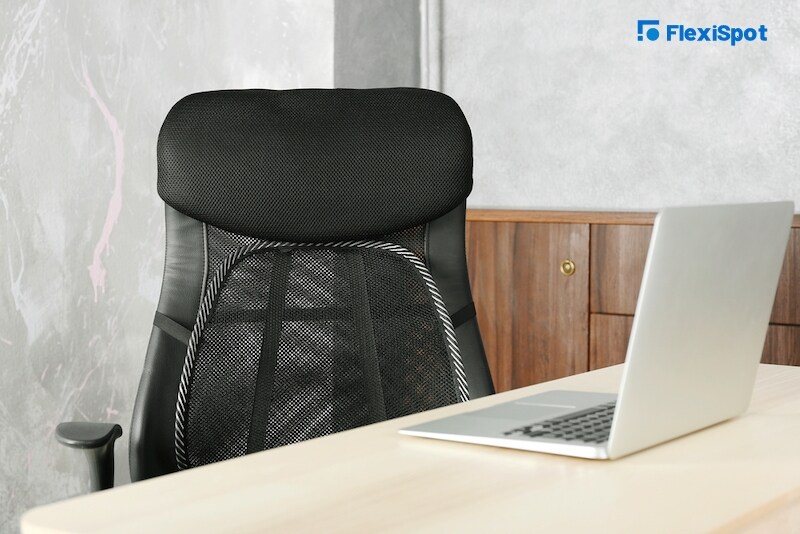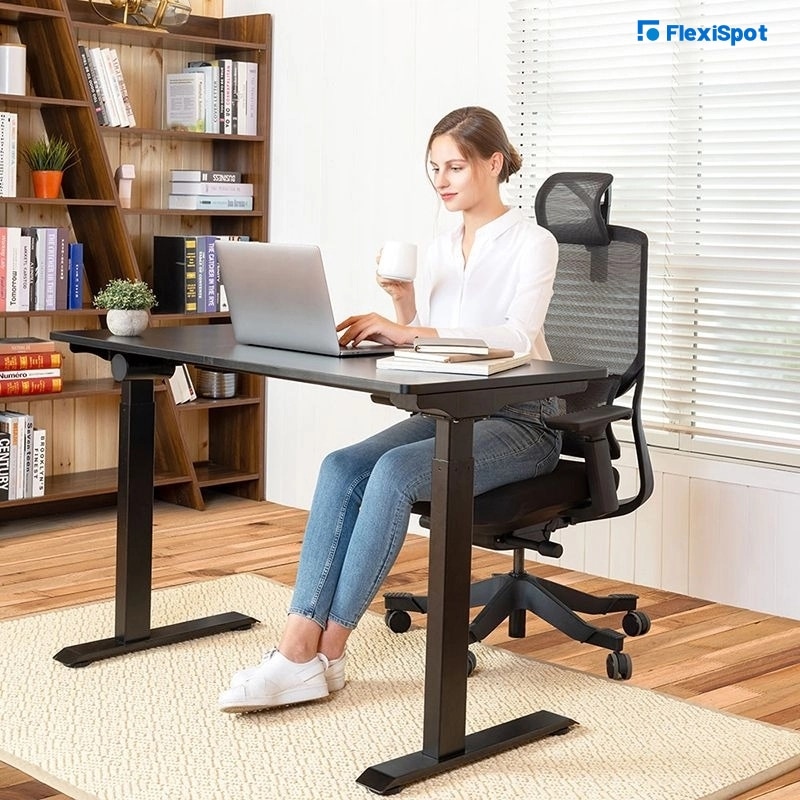One of the most common health-related complaints from people around the world nowadays is that of back pain. Most people will spend a very large portion of their life working, with hours on end spent sitting at the same spot.
Of course, none of this is without consequences, and the risk factors around this sedentary lifestyle have made themselves apparent in recent years. From lower back pain to deformation of spine curvature, there are a number of serious risks involved.
This is why you should have good lumbar support at the back of your chair. The lumbar region is the lower back, and having a chair that supports the natural curvature of your spine and keeps you safe from spinal problems is important. This is especially true if you know you’ll have to spend long hours at your workstation.
Lumbar support is a feature that pretty much all office chairs now provide. Modern ergonomics puts a lot of emphasis in providing support to the lower back and thus preventing any potential health hazards.
But there’s no one-size-fits-all solution for lumbar support either. There are different options available for lumbar support even in office chairs. Each type of mechanism is suited to different kinds of people. Depending on the shape and size of your body, different mechanisms may work to support your back. Knowing these will help you decide which one you need.

Types of Lumbar Support and Ergonomic Office Chairs
Let’s look at some of the options for lumbar support.
Fixed Lumbar Support
Fixed lumbar, as the name suggests, refers to lumbar support that is fixed into position and cannot be changed. This is usually built into the foam of the backrest. This kind of lumbar support is usually meant for the general populace and is a bit basic. It is likely designed with the idea that most people will need a lumbar depth between 0.6 and 2 inches, and is, therefore, suitable for most.
While this is still lacking in terms of ergonomics – we’ve established, after all, those different people will have different needs depending on their body type – it is better than having no lumbar support at all.
At the same time, depending on the curvature of someone’s spine, a fixed lumbar can actually be counterproductive if the curve was either too much or not hitting the right spot. It is best to test the chair out to make sure it works for you. If you feel like your body type is relatively average, you may find that a fixed lumbar chair may actually work for you.
If you don’t feel comfortable with it, it’s best to avoid using it.
Adjustable Lumbar Support
As the name implies, adjustable lumbar support is where you can adjust the chair to better fit the curvature of your spine and your body shape. This allows you to get better support than if you were to use a fixed lumbar chair.
There are many different kinds of lumbar support available in chairs.
Height Adjustment
One option is where you can adjust the height of the lumbar support so that it targets the specific area of your back. Because people have different heights, and different abdominal lengths, there are easily differences between what kind of chairs work for different people. Height adjustment allows everyone to get the right kind of support.
Depth Adjustment
Some chairs also come with depth adjustment which allows them to control how much the lumbar support protrudes in or out.
Firmness Adjustment
Some chairs also have the option to adjust how firm the lumbar support is. You can usually change this with a dial or knob located under the seat pan.
Most adjustable lumbar support would provide a combination of the above features but it is not uncommon to find chairs with only one.
Dynamic Lumbar Support
This kind of lumbar support is where the chair will automatically adjust itself in terms of depth and firmness depending on your posture and body type to provide support. This is useful since you don’t have to constantly keep adjusting the chair to suit your needs. Many mesh ergonomic chairs come with dynamic lumbar support because the mesh is flexible and contours to the shape of your back naturally. This allows for better and more natural lumbar support than other types.
External Lumbar Support
Some chairs will just not be made with ergonomics in mind. After all, not all chairs are meant for sitting in for long periods of time. Chairs for dinner tables, for example, are not made with your office hours in mind, because the expectation is that you’d be sitting in them for a few minutes.
But people tend to work in all sorts of places – including the dinner table. Some employers may also be trying to save up on the costs of incorporating ergonomics in the workplace and may get chairs that are not made with lumbar support in mind.
So you might wonder: how do I add lumbar support to my office chair?
For such chairs, external support is useful. You could get a cushion or a DIY pillow to support your back while you work. Some chairs also come with external support in the form of head pillows and lumbar cushions. This is a lot less expensive than incorporating lumbar support into the chair itself.
Many times, these external options go disregarded and are sometimes inefficient as well, but there are plenty of dedicated external support accessories to provide lumbar support. Different pillows and cushions can be found to suit different body types and shapes to provide the right kind of support.

Sitting With Lumbar Support
When you’re sitting at the chair, you should also make sure to do so in a way that makes the lumbar support effective. Some people tend to perch at the front of their chairs and put some space between their back and the backrest. This is counterproductive.
When sitting at your chair, you should make sure that your lower back is pressed to the lumbar support. You should also sit upright and keep from slouching. Slouching causes your spine to curve in an unnatural position which can be dangerous in the long-run.
Regardless of how much support any chair provides though, you should always make a habit of taking breaks and moving around every once in a while to improve blood circulation and allow stretching.